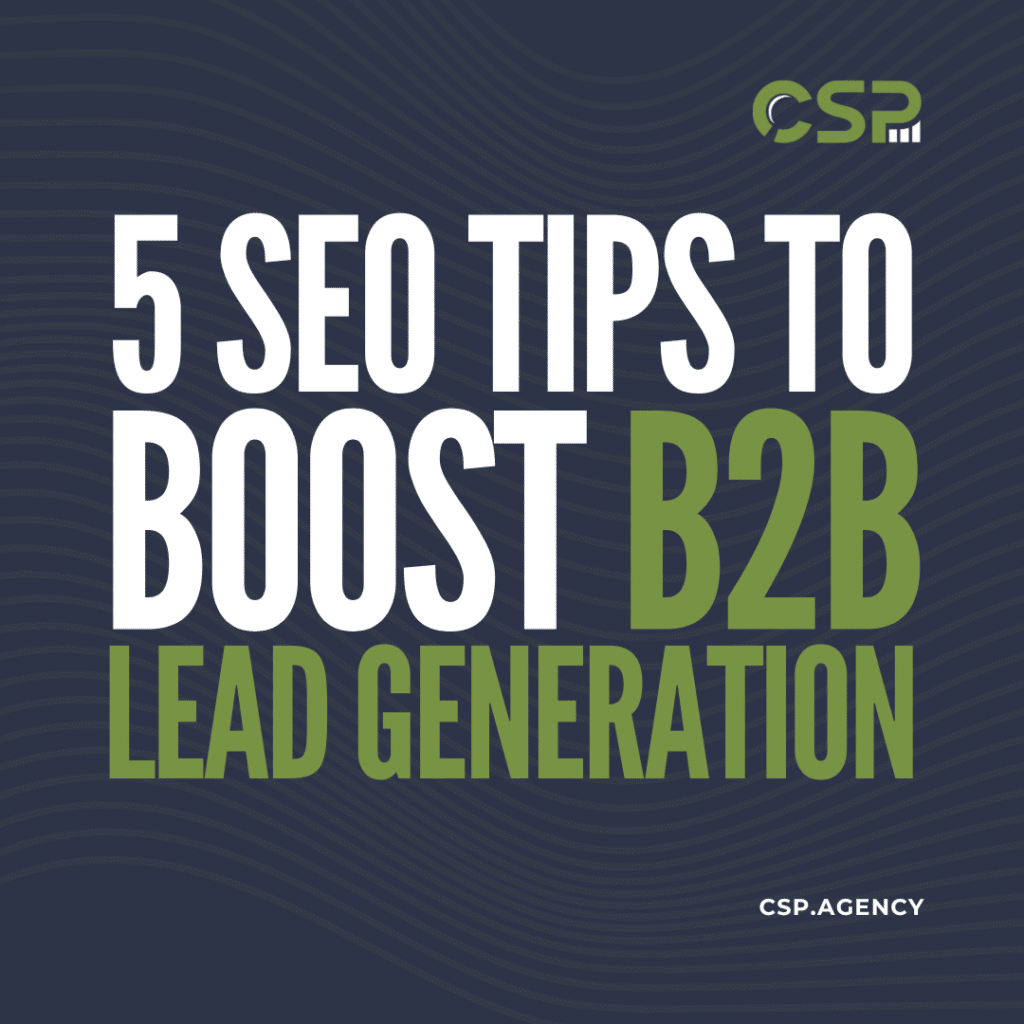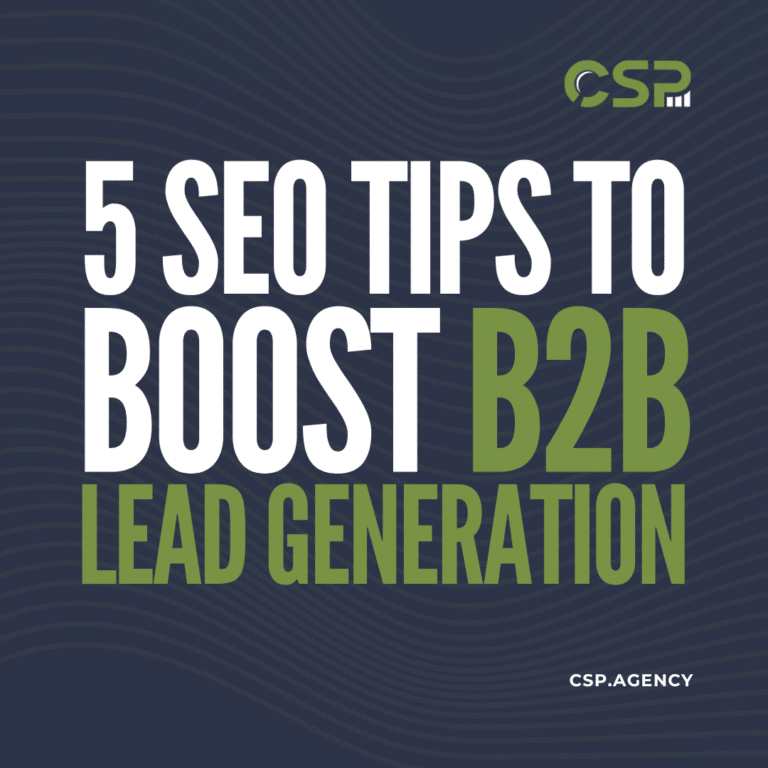5 SEO Tips to Boost Lead Generation and Conversions
If you’re like most B2B companies, you’re utilizing multiple marketing channels and strategies to generate more leads and boost sales. However, while many brands may invest in slick campaigns and paid advertising, they’re often neglecting a crucial part of the equation: their websites.
The secret to good B2B lead generation isn’t catchy keywords or viral content. While those components can help, they’re worthless without a high-quality, high-converting website. All of your marketing materials should be directed at your site, so if it’s got poor content or ineffective calls to action, it won’t do your business any good.
Thankfully, website conversion rate optimization doesn’t have to be a grueling ordeal. With the right tools and insights, you can transform a low-converting site into a lead-generation powerhouse. So, let’s look at the top five reasons websites fail and what you can do about it.
Reasons Your Website Isn’t Converting
1. Boring and Messy Landing Pages
Although the saying goes, “Don’t judge a book by its cover,” that mantra does not hold true for modern websites. These days, consumers will absolutely judge a business or brand based on how clean and well-designed its website looks. So, if you want to improve B2B lead generation, start with the layout and design elements.
First, your site should look clean and organized. Buttons, links, images, and text should all be laid out to be as easy to read as possible. A site with too much going on will be a huge turn-off for new visitors, even if the content is valuable or engaging. Simplicity is your friend.
Second, cater to short attention spans. If visitors see long blocks of boring text, they won’t stick around to read it. Get your point across as quickly and succinctly as possible. Whatever the most important element is (i.e., a call to action), put it “above the fold,” meaning users don’t have to scroll down to see it.
Lastly, visual elements are crucial for conversion rate optimization. Black text on a white background (or vice versa for dark-themed pages) doesn’t scream “exciting” or “professional.” Utilize visual aids like images, graphics, or even video clips to enhance your message. Also, develop a color scheme that repeats throughout the entire site; one that looks appealing but isn’t too overwhelming.
2. Complicated Navigation and Menus
Modern audiences know they’ll likely have to click through a website to find what they need. But, if the navigation process is convoluted or confusing, users will simply leave and try to find their answers elsewhere.
When it comes to site navigation, understanding your user’s intent will help significantly. For example, someone visiting your home page likely wants more information about your business and what you offer. Someone visiting your blog may want to read more posts and gather more insight. Finally, someone visiting a product or service page may want to contact a sales rep or subscribe for future offers.
In each case, your navigation layout should create a seamless user experience. Place relevant calls to action (e.g., subscribe here, schedule a demo, read more about [topic]) where users can see them. If a visitor has to keep going to the home page to get somewhere else, they’ll get frustrated and leave.
3. Your Site Isn’t Mobile-Friendly
These days, more people are browsing websites on mobile devices than ever before (almost 64 percent of web traffic overall). So, you must invest in a mobile-friendly webpage. However, keep in mind that you want your site to adjust its layout depending on the device used to access it. Thankfully, most website-building tools enable you to create a desktop and mobile-friendly version of all your landing pages.
Typically, being “mobile-friendly” means adapting images and text for a smaller screen and letting users scroll as much as necessary. Buttons should also be optimized to be larger and in the center of the screen for easier access. In some cases, the quickest route to conversion rate optimization is just making your layout better for mobile devices.
4. No Calls to Action
One of the secrets of B2B lead generation is that you want to qualify your leads as much as possible before your sales reps reach out. One way to do that is to include calls to action. The more proactive a lead is in finding out more information about your product or service, the more likely you can convert them into a customer.
That said, there’s a bit of a delicate balance between posting a call to action prominently on the page and having it dominate the user experience. If you’re too pushy about it, most users will get turned off. Overall, the CTA should draw attention and be easy to find but not distract from the other information on the page. If users have to hunt for a CTA button, they’ll likely give up and leave without doing anything on your site.
The other key point of a call to action is that it should be quick and easy. For example, if someone wants to subscribe to your newsletter, you should only ask for their first name and email address. Anything more may seem sketchy or off-putting. Similarly, if a user has to go through multiple pages or forms to complete a CTA, they’ll probably give up before finishing.
5. Missing Pages and Broken Content
Sometimes, conversion rate optimization has little to do with your content and more to do with the technical side of website development. One of the simplest ways to ensure your site is performing well is to conduct a technical SEO audit. Broken links and missing pages not only lead to a negative user experience but can also impact your Google SERP ranking. An audit allows you to spot and correct these errors before they lead to any problems.
Generate More Leads Starting Now
B2B lead generation doesn’t have to be a mystery. With a comprehensive site audit from the SEO experts at CSP, you can identify and correct problems and supercharge your website as quickly as possible. We know what it takes to turn your landing pages into strong lead magnets. Contact us today to get started.

